In the arrangement shwn in Fig.4.96, plate (B) given a charge equal to 60
μC, The ratio d1/d2 is 2. Then
q1=___
q2=_____
q3=_____
q4=______
q5=_______
q6=_______
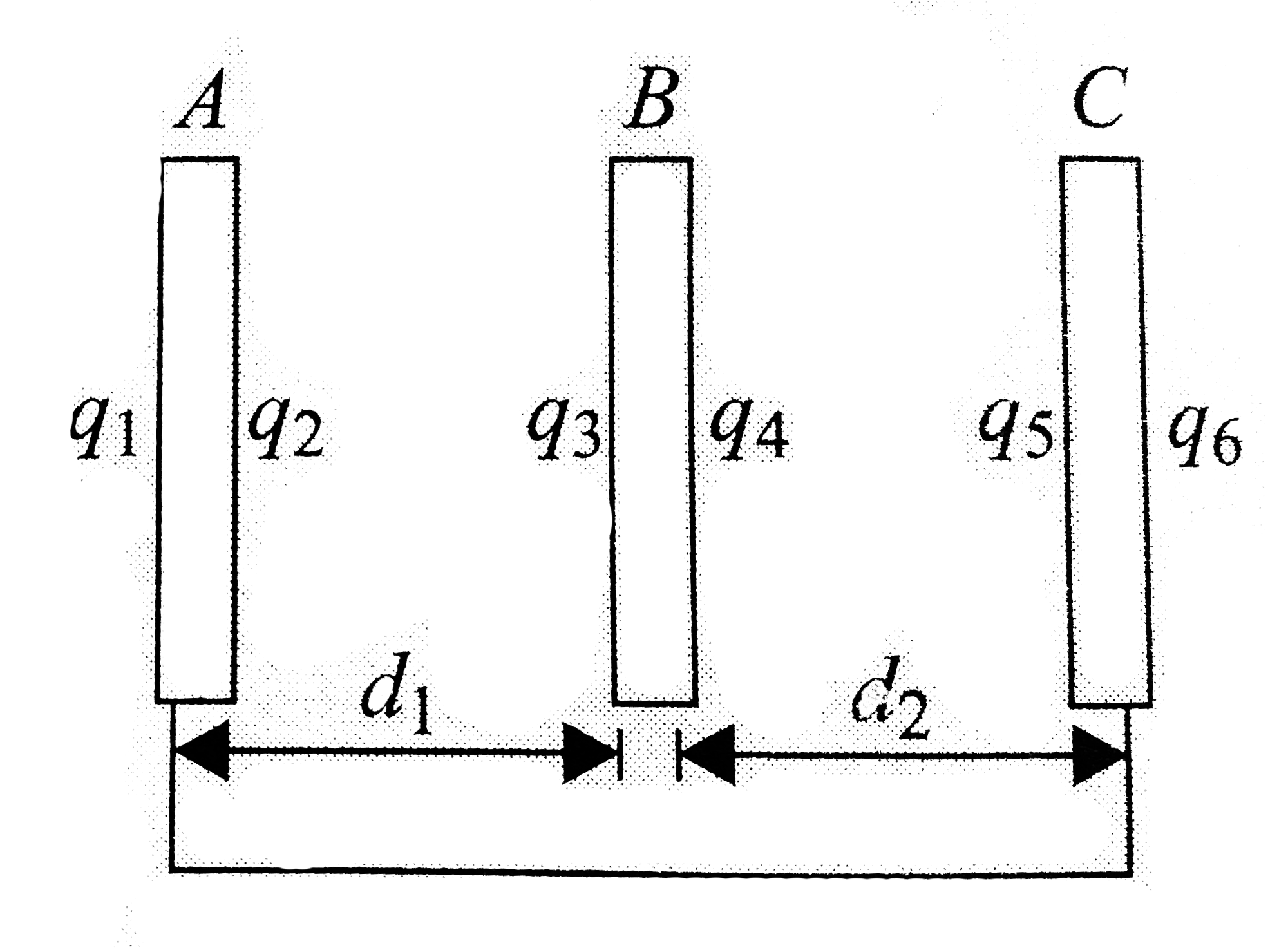 .
.
Since charges on outer surfaces will be half of the total charge of all the three plates, So q1=q6=60/2=30μC.
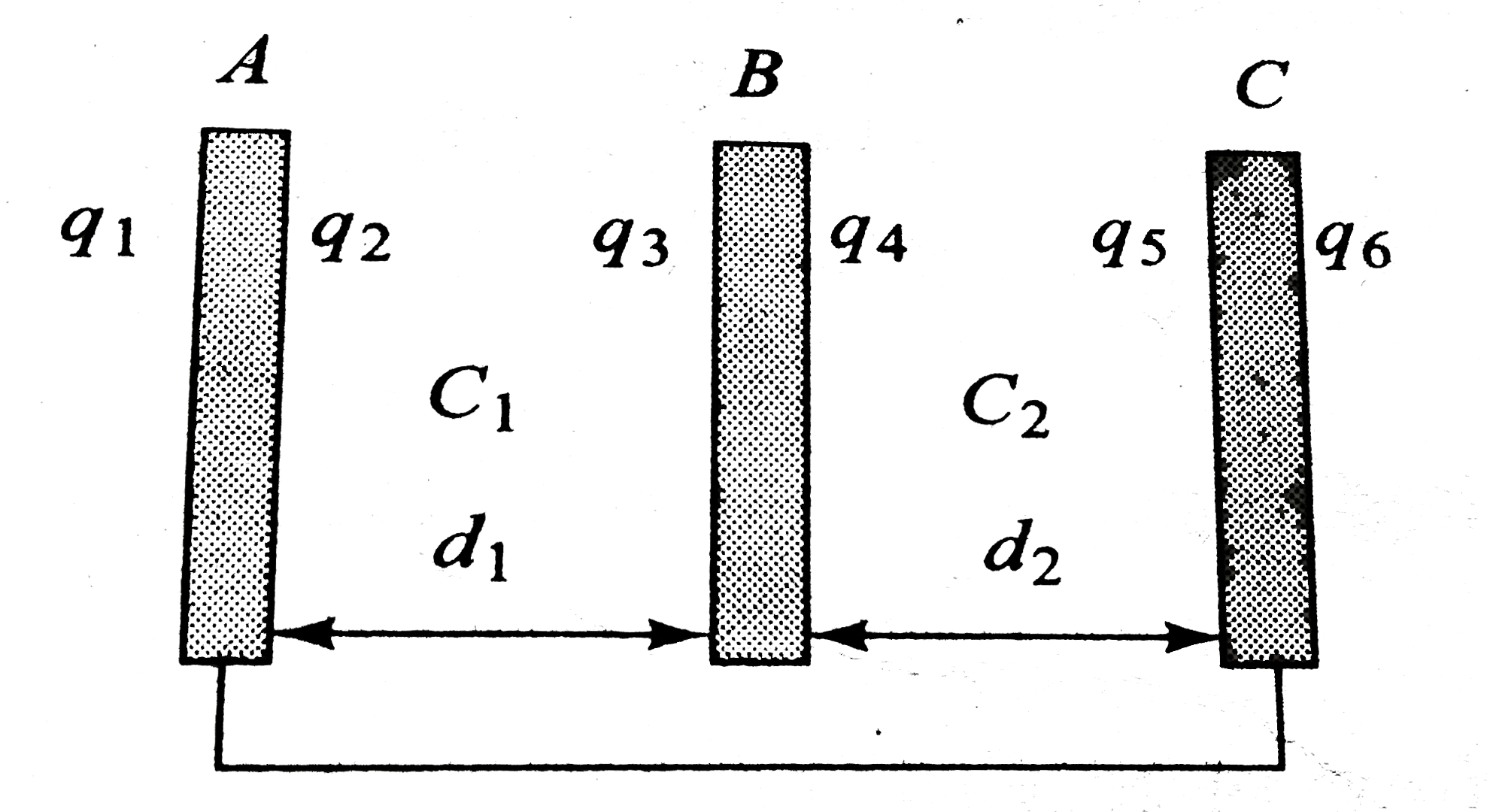 .
.
q3=q2,q4=−q5
⇒VAB=VCB
or q−(2)C1=q5C2
q2d1=q5d2⇒q22d2=q5d2
q5=2q2⇒q4=2q3
and q3+q4=60
q3=20μC⇒q4=40μC
And q2=−20μC⇒q5=−40μC
Topper's Solved these Questions
- CAPACITOR AND CAPACITANCEBook:CENGAGE PHYSICSChapter:CAPACITOR AND CAPACITANCEExercise:Subjective
Explore 24 Videos
- CAPACITOR AND CAPACITANCEBook:CENGAGE PHYSICSChapter:CAPACITOR AND CAPACITANCEExercise:Single Correct
Explore 49 Videos
- CAPACITOR AND CAPACITANCEBook:CENGAGE PHYSICSChapter:CAPACITOR AND CAPACITANCEExercise:Exercise 4.1
Explore 13 Videos
- ATOMSBook:CENGAGE PHYSICSChapter:ATOMSExercise:QUESTION BANK
Explore 40 Videos
- CENGAGE PHYSICS DPPBook:CENGAGE PHYSICSChapter:CENGAGE PHYSICS DPPExercise:subjective type
Explore 51 Videos
Similar Questions
In plate A has 100μC
charge, while plate B has 60μC charge.
a. When both switches are open, then
q1=_____
q2=______
q3=______
q4=_______
b. When switch S1 is closed,
the
q1=_____ , q2=______
q3=_______ , q4=_____
c. When switch S1 is also closed, then
q1=______
q2=______
q3=______ ltbrlt q4=_______ .
 .
.
View SolutionThe electric lines of force of two point charges are shown in fig. What is the value of the ratio q1/q2 ?
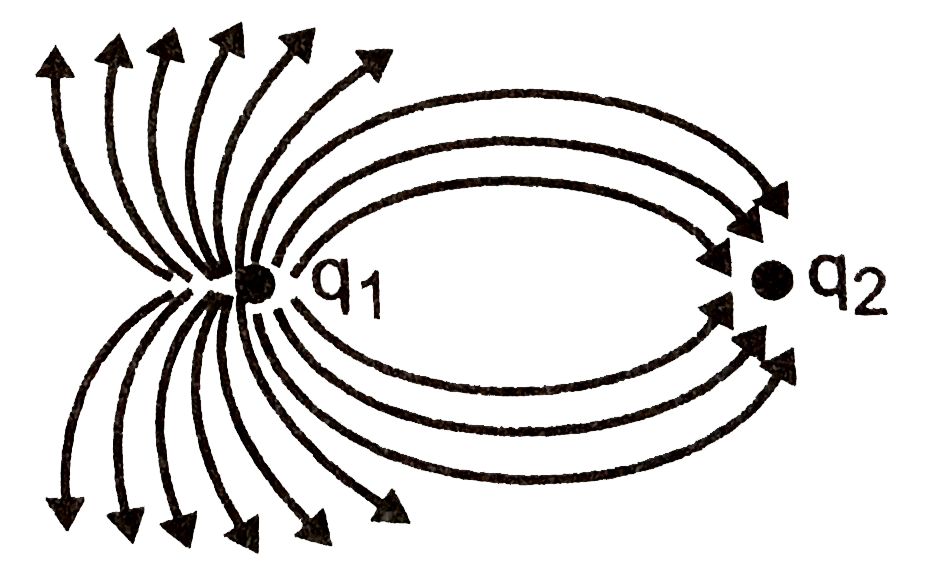
View Solution
Knowledge Check
A charge q1 exerts some force on a second charge q2 If a third charge q3 is brought near q2, then the force exterted by q1 on q2
AdecreaseBincreaseCremains the sameDincrease, if q3 is of same sign as q1 and decrease, if q3 is of opposite sign as q1In, the charges on C1,C2, and C3, are Q1,Q2, and Q3, respectively.
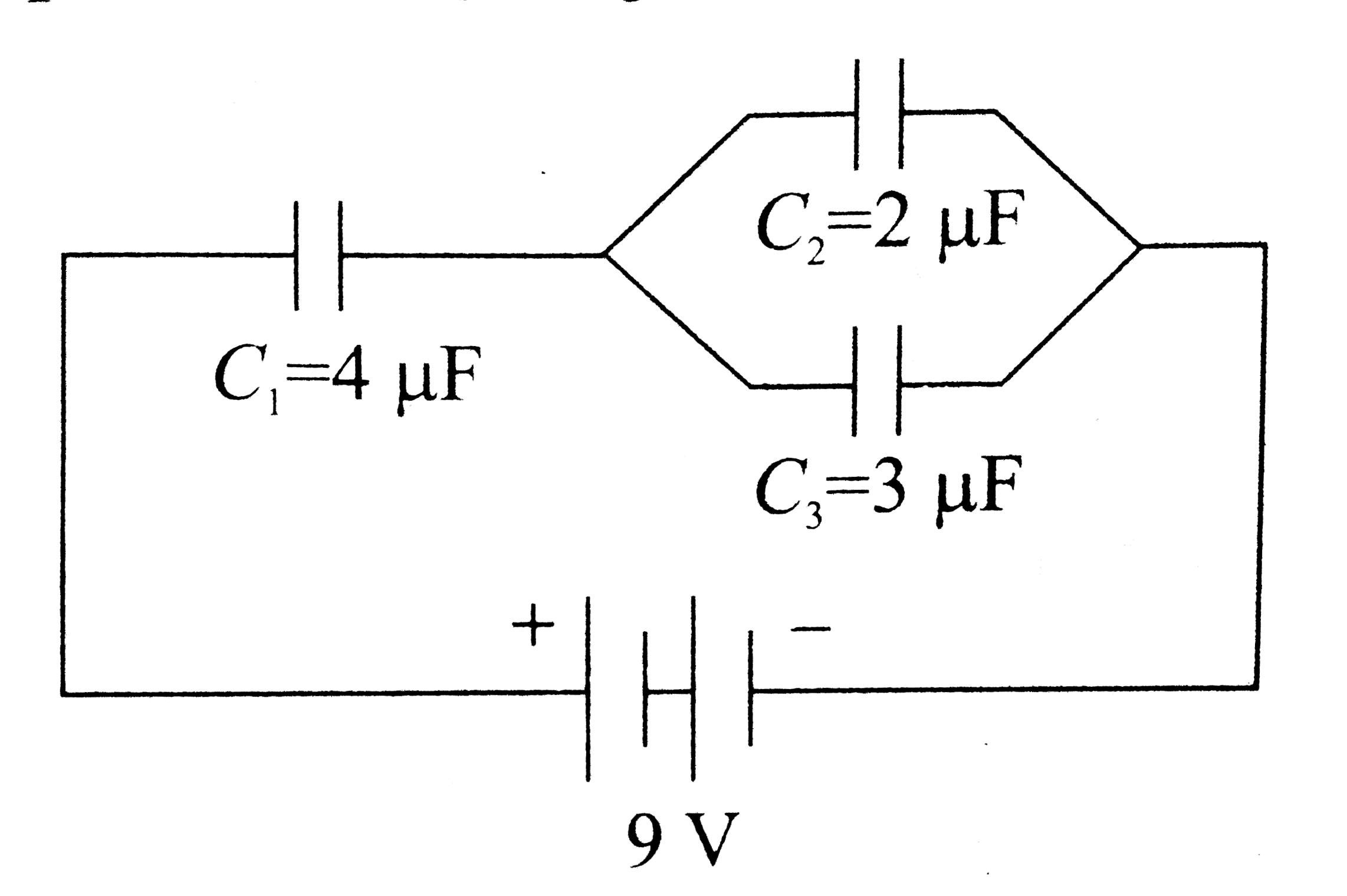 .AQ2=8μCBQ3=12μCCQ1=20μCDQ2=12μC
.AQ2=8μCBQ3=12μCCQ1=20μCDQ2=12μCIf q1,2,q3 are roots of the equation x3+64=0, then the value of ∣∣ ∣ ∣∣q1q2q3q2q3q1q3q1q2∣∣ ∣ ∣∣ is :-
A1B4C16D0
Charges q1 , q2 and q3 are placed on capacitors of capacitance C1, C2 and C3, respectively, arranged in series as shown. Switch S is there closed. What are the final charges q'1, q'2 and q'3 on the capacitors?
Given q1=30μC, q2=μC, q3=10μC, C1=10μF, C2=20μF, C3=30μF and ε=12volt
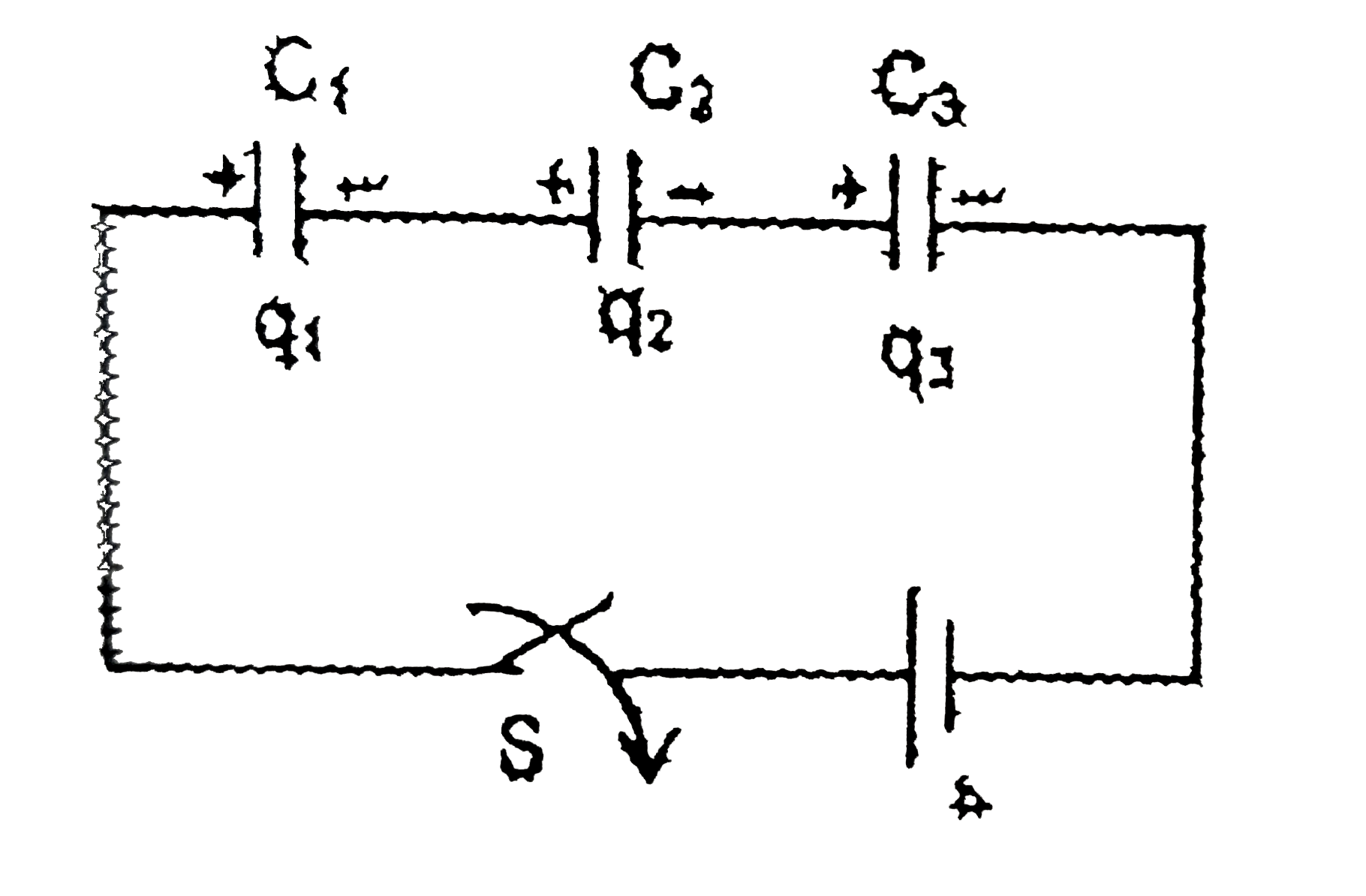
View SolutionIf "q1+q2=q" ,then the value of the ratio "q1q" ,for which the force between q1 and "q2" is maximum is
View SolutionCalculate Q1,Q2andQ3,
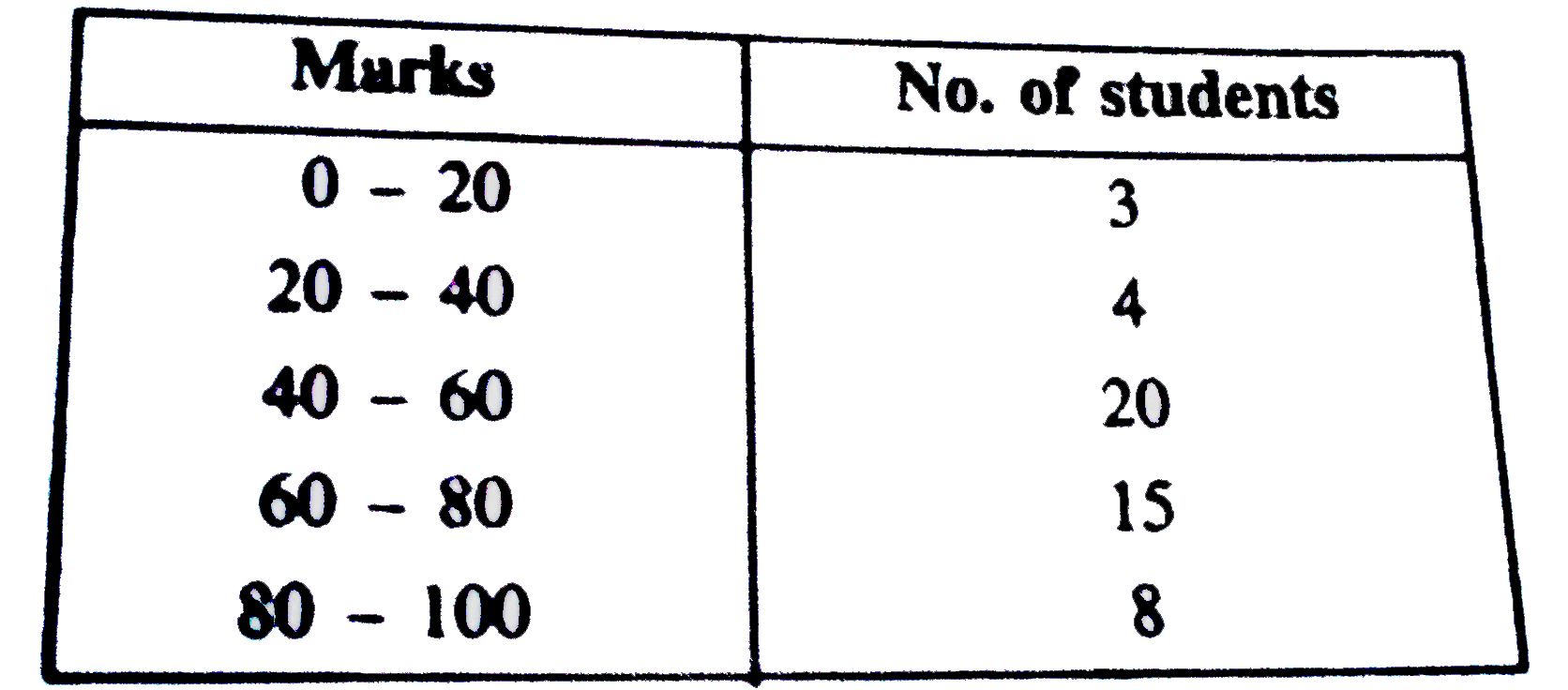
View SolutionWhat is the electric potential at point P, located at the center of the square of charged particles shown in Fig. 24-16a? The distanced is 1.3 m, and the charges are
q1=+12nC, q3=+31nC,
q2=−24nC, q4=+17nC.
View SolutionThe electric force on a charge q1 due to q2 is (4ˆi−3ˆj)N. What is the force on q2 due to q1?
View Solution

